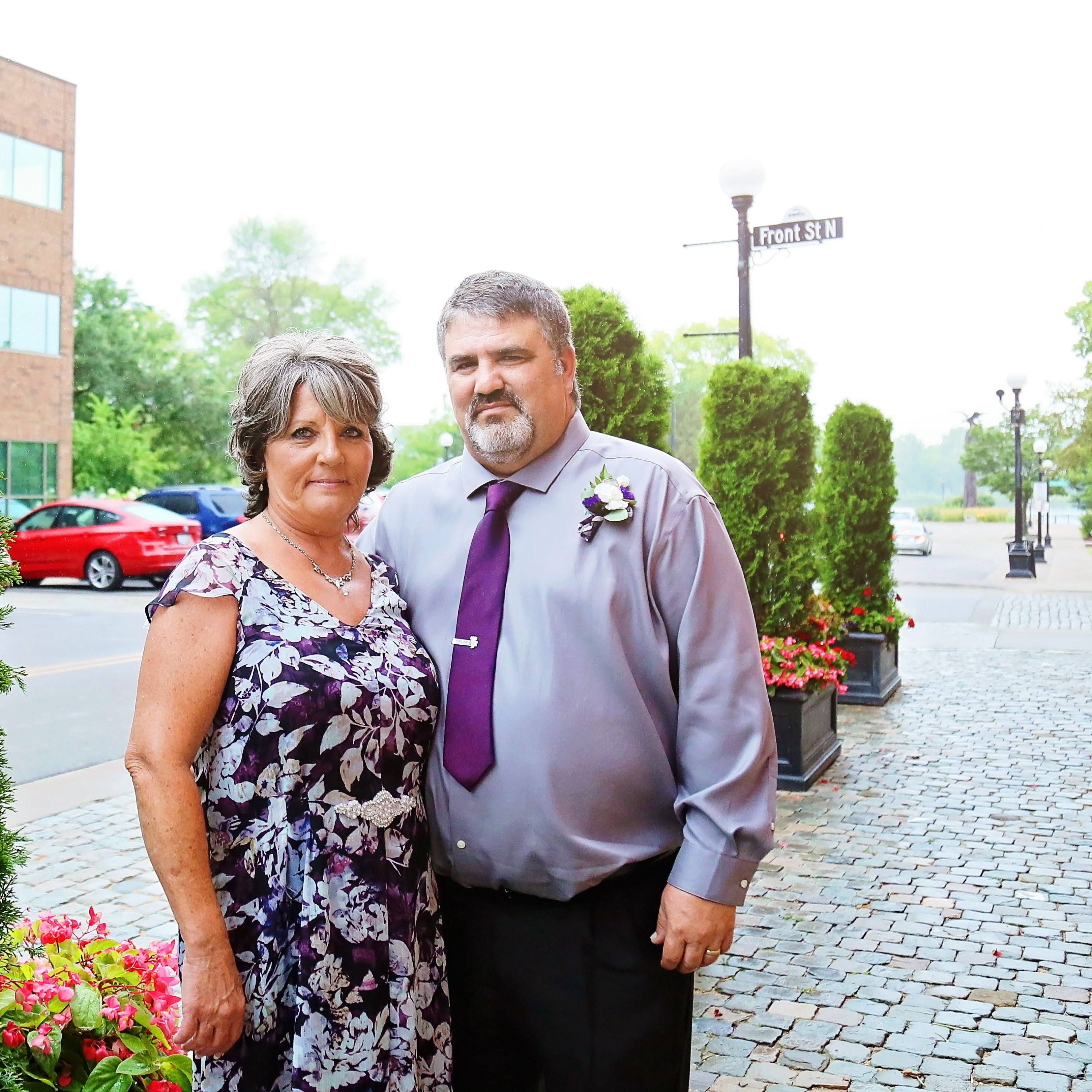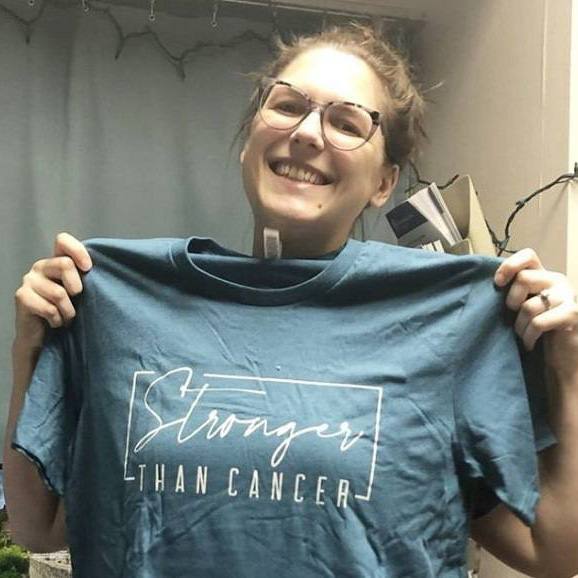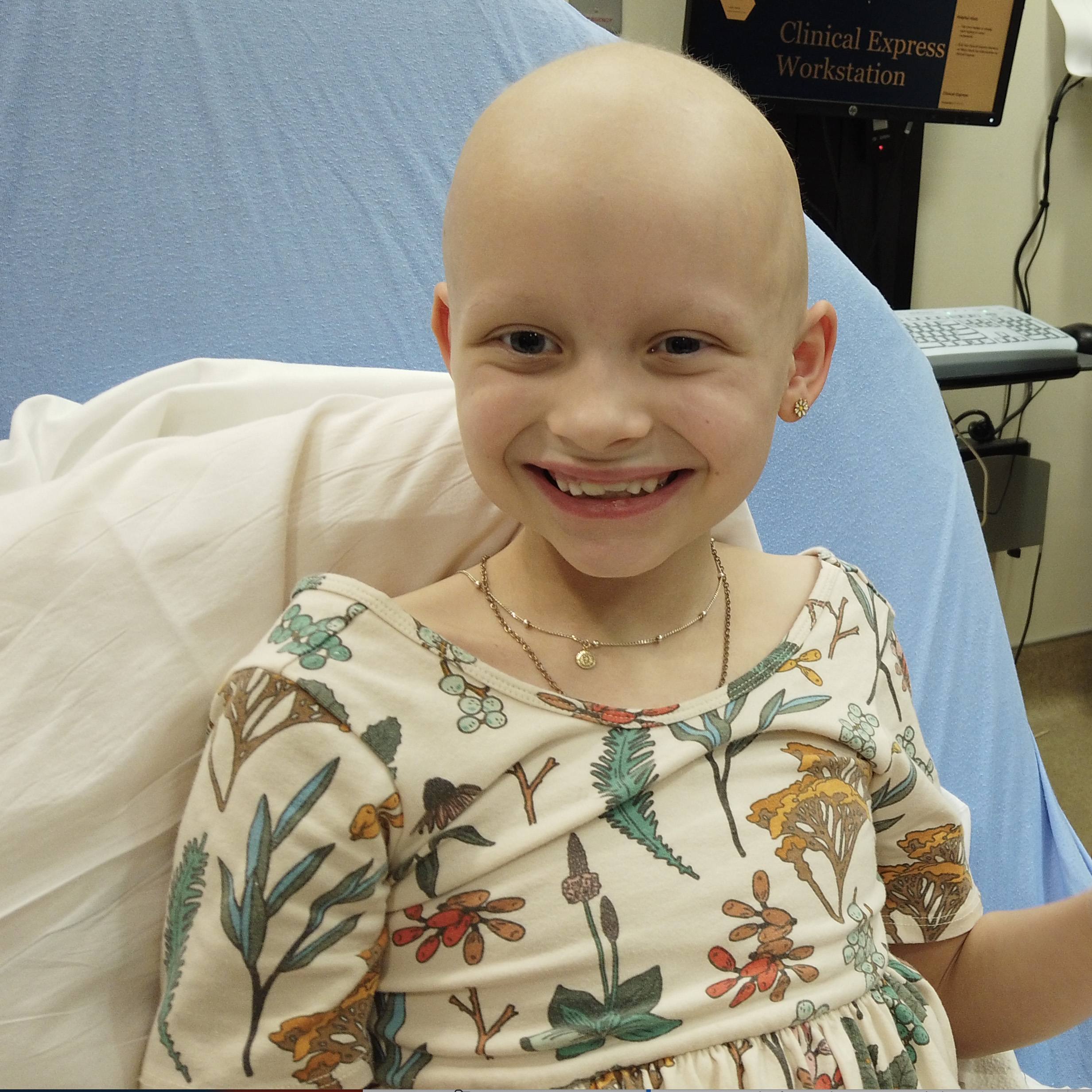
Alonzo Chappell was a healthy guy. He had not so much as caught a cold for decades. That changed in a big way when he was diagnosed with non-Hodgkin's lymphoma — a diagnosis that led him to Mayo Clinic for an innovative and ultimately lifesaving form of cancer treatment.
For the first 58 years of his life, Alonzo Chappell had barely seen the inside of a doctor's office. "I never got sick," he says. "I was always very healthy. No colds, flus or anything like that."
Then one day, Alonzo, a construction worker in Florida, was overcome by fatigue. "I also noticed that I had some lumps on my neck and groin," he says. "But they didn't hurt, so I didn't think anything of it. I thought they'd go back down on their own."
They didn't. Those lumps triggered a health care journey that not only brought Alonzo into a doctor's office for the first time in decades, it took him to the Mayo Clinic Cancer Center at St. Vincent's in Jacksonville, Florida, and then on to Mayo Clinic in Florida for comprehensive cancer care.
Benefits of collaboration
Three years ago, Mayo Clinic and St. Vincent's HealthCare, a ministry of Ascension Health, formed a joint collaboration to bring Mayo Clinic's nationally ranked cancer services to patients via a newly built medical suite at St. Vincent's Riverside. The goal of the collaboration was to offer Mayo Clinic Cancer Center's programs and services to more patients in the Riverside and Avondale communities of Jacksonville.
"St. Vincent's has a well-established cancer program and has been nationally certified for 50 years," says Elizabeth A. Johnson, M.D., a Mayo Clinic oncologist at St. Vincent's. "They have all the components needed for a full-fledged cancer program with the exception of laboratory research and early-phase clinical trials."
There were two basic ideas and hopes for the collaboration, says Dr. Johnson. The first was to bring Mayo Clinic's medical expertise to patients at St. Vincent's whose health insurance may not allow them to go to Mayo Clinic on their own.
"We have physicians from Mayo's Department of Oncology who come back and forth to St. Vincent's," Dr. Johnson says. "Oncology and hematology subspecialists from the main campus come to the Mayo Clinic Cancer Center at St. Vincent's typically for a day every few weeks to see patients and direct care. A core of Mayo hematologists-oncologists are full time at St. Vincent’s and provide the ongoing care under the direction of the Mayo subspecialists. I have been the primary physician working at St. Vincent’s since the opening of the program."
The second goal of the Mayo-St. Vincent's collaboration was that, for patients whose health insurance does allow them to seek treatment at Mayo Clinic, "we'd be able to refer them to our main campus in Jacksonville to participate in clinical trials and other specialty care. And in fact, Mr. Chappell is a prime example of that," Dr. Johnson says.
Sudden symptoms
A few days after Alonzo first noticed the suspicious lumps, he started sweating profusely. "I'd go through five or six T-shirts a night," he says. "I had no clue why. I'd turn the A/C up, my house would be cold, and I'd still be sweating."
When Alonzo was unable to go to work due to fatigue, he knew he needed help. "I called into one of those outpatient clinics because I didn't even have a primary care doctor," he says. "I have health insurance through my job. But I'd never thought about getting a primary care doctor because I'd never been sick before this."
"Quite honestly, when you hear the word, 'cancer,' you get real still. It freezes you."
Alonzo Chappell
Alonzo found a physician and made an appointment. That appointment is one he'll never forget. "After discussing my symptoms and examining my lumps, the doctor said she wanted to send me to a specialist right away because she suspected cancer," Alonzo says. "Quite honestly, when you hear the word, 'cancer,' you get real still. It freezes you."
The specialist that Alonzo saw next confirmed what the primary care physician had suspected. Test results came back showing Alonzo had non-Hodgkin's lymphoma. "I was sent to St. Vincent's (Mayo Clinic Cancer Center) and started chemotherapy treatments right away," he says.
Tailored treatment
Alonzo was placed under Dr. Johnson's care. "She's great," he says. "She was very knowledgeable about what was going on with my cancer and how to treat it."
"When Alonzo first came to us, he had an extremely aggressive lymphoma that had spread into his bone marrow," Dr. Johnson says. "He also had a lot of lymph nodes in his body that were enlarged. When we sampled his spinal fluid, it was found to have lymphoma cells in it, as well, which is a bad sign."
Despite that difficult prognosis, Dr. Johnson was determined to do all she could to rid Alonzo of cancer. "We started his treatment with a standard chemotherapy protocol that we use for this type of lymphoma. The lymph nodes did show regression, and the lymphoma in his bone marrow also improved," she says. "He had a very severe reaction to the treatment for the lymphoma cells in his spinal fluid, however, which we then had to modify. But we were pretty successful in eventually getting his spinal fluid cleared of lymphoma cells."
At that point, Dr. Johnson was hopeful Alonzo could take the next step in his treatment plan — a bone marrow transplant. Before completion of the initial treatment, though, the lymphoma was growing again. "We switched to a second-line treatment program that resulted in a brief improvement, but he again relapsed," Dr. Johnson says.
Dr. Johnson then discussed other potential treatment options for Alonzo with her Mayo Clinic colleagues. "That's when CAR-T therapy was first brought up as a possibility for him," she says.
"(Alonzo) received a third program of chemotherapy here at St. Vincent's … and right at the point where he was improving, we were able to initiate the CAR-T therapy. With CAR-T, he's now been in remission for close to a year."
Elizabeth A. Johnson, M.D.
CAR-T cell therapy is an individualized cell-based therapy that involves removing some of a patient's own white blood cells, including T cells. The cells then are genetically treated to produce special receptors called chimeric antigen receptors, or CARs. The new receptors allow the T cells to recognize and kill certain cancer cells after being infused back into a patient's body.
Though relatively new, CAR-T cell therapy is one of the most promising forms of cancer treatment, Dr. Johnson says. And it's the one that she and fellow oncologist Mohamed Kharfan Dabaja, M.D., believed could help Alonzo. They were right.
"He received a third program of chemotherapy here at St. Vincent's again with improvement, and right at the point where he was improving, we were able to initiate the CAR-T therapy," Dr. Johnson says. "With CAR-T, he's now been in remission for close to a year."
No better place to be
Achieving that remission likely would not have occurred without access to the CAR-T Cell Therapy Program. "I think his having first been at St. Vincent's under the Mayo program of care there and in turn having access to Mayo's CAR-T program in Jacksonville really was a lifesaving turn of events for him," Dr. Johnson says.
"My entire care team at Mayo Clinic and St. Vincent's were always so optimistic and encouraging. All of that just naturally spilled over to me and gave me the belief that I could and would get better."
Alonzo Chappell
It's a turn of events that Alonzo says he never doubted that he'd experience. "I never gave up hope. I was scared throughout my treatment because I know people who have died from cancer. But not once, even during my lowest moments, did I ever think I was going to die," he says. "My entire care team at Mayo Clinic and St. Vincent's were always so optimistic and encouraging. All of that just naturally spilled over to me and gave me the belief that I could and would get better."
Now that he is better, Alonzo plans to stay that way. "So far, everything's still good," he says. "I just had another scan that showed I'm still in remission. I'm walking 2 miles a day right now, just trying to keep my strength up. We just have to stay on this straight and narrow now."
With his care team by his side, Alonzo knows that's possible. "I can't say enough about them. They're just super people," he says. "I've never seen doctors and nurses with so much patience, so much knowledge and so much compassion — top of the line people all the way down the line. I've never been treated so well in my life. Cancer treatment isn't an ordeal you want to go through, but if you have to go through it, there's no better place to do so than Mayo Clinic."
HELPFUL LINKS
- Learn more about non-Hodgkin's lymphoma.
- Read about the CAR-T Cell Therapy Program at Mayo Clinic.
- Check out the Mayo Clinic Cancer Center.
- Connect with others talking about cancer on Mayo Clinic Connect.
- Explore Mayo Clinic.
- Request an appointment.







